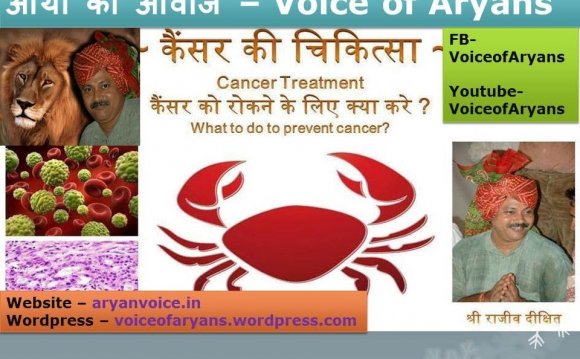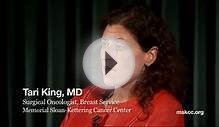
(1) Overview
(2) Symptoms
(3) Risk factors
(4) Breast self examination
(5) Diagnosis as per modern science
(6) Staging
(7) Ayurvedic treatment
(1) Overview: -
Breasts prepare milk for the baby. They extend from the collar bone to the armpit at the side. There are large muscles behind the breasts attached to the ribs and to the shoulder joint bones.
The breast consists of milk glands supported by tissue and fat. Milk is made in the milk glands and milk sacks and conveyed through the ducts to the nipple. These glands are divided in about 20 segments radiating from the nipple.
The breast changes in shape and texture during monthly periods, pregnancy, and age and with weight changes.
A large majority (about 90%) of all breast cancers begin in the ducts or lobes. Almost 75% of all breast cancers begin in the cells lining the milk ducts and are called ductal carcinomas. Cancers that begin in the lobules are called lobular carcinoma. Lobular carcinoma has a higher chance of occurring in the opposite breast either at the time of diagnosis or in the future.
If the disease has spread outside of the duct or lobule and into the surrounding tissue, it is called invasive or infiltrating ductal or lobular carcinoma. Disease that has not spread is called in situ, meaning "in place." The course of in situ disease, depends on whether it is originated as ductal carcinoma in situ (DCIS) or lobular carcinoma in situ (LCIS).
Other, less frequently occurring cancers of the breast include medullar, mucinous, tubular, or papillary breast cancer. Inflammatory breast cancer, is a faster-growing type of cancer that accounts for about 5% of all breast cancers. It may be misdiagnosed as a breast infection because there is often swelling of the breast and redness of the breast skin. Paget's disease is a type of in situ cancer that can begin in the ducts of the nipple.
Breast cancer cells may spread to other sites in the body by migrating through the blood vessels and/or lymph vessels. The lymph nodes can be located under the arm (axillary), in the neck (cervical), or just above the collarbone (supraclavicular). The most common sites of distant metastasis are the bones, lungs, and liver. The cancer can also recur locally in the skin or tissues of the chest.
When cancer begins, it is a single, genetically abnormal cell. As this one cell divides, it eventually becomes a tumor (a mass of cells) and develops a blood supply to nourish its continued growth. At some point, cells may break off from the primary mass and move through the blood supply or nearby lymph system to other parts of the body this process is called metastasis.
In some cases breast cancers may be diagnosed and treated before metastasis occurs. In other cancers may have already metastasized by the time they are diagnosed, if the diagnosis is no early enough. Generally, as the tumor grows in size, the chances of metastasis increases. The larger the size of primary tumor the greater the chances of metastasis.
(2) Symptoms: -
Although widespread use of screening mammography has increased the number of breast cancers found before they cause any symptoms, some breast cancers are not found by mammography, either because the test was not done or because even under ideal conditions mammography cannot find every breast cancer.
The most common sign of breast cancer is a new lump or mass. A painless, hard mass that has irregular edges is more likely to be cancerous, but some cancers are tender, soft, and rounded.
Other signs of breast cancer include a generalized swelling of part of a breast, skin irritation or dimpling, nipple pain or retraction (turning inward), redness or scaliness of the nipple or breast skin, or a discharge other than breast milk. Sometimes a breast
cancer can spread to underarm lymph nodes even before the original tumor in the breast tissue is large enough to be detected.
(3) Risk factors: -
Natural Risk factors
(1) Gender Women have more breast cells than men hence the chances of them developing breast cancer are higher than men. These cells in women are constantly exposed to the growth promoting effects of female hormones, men can develop breast cancer, but it happens very rarely.
(2) Age A persons risk of developing breast cancer increases with age. About 80% of patients with breast cancer are above 50 when diagnosed.
(3) Genetic risk factors Genetic factors have been found responsible for developing breast cancer.
(4) Family history of breast cancer Breast cancer risk is higher among women whose close relatives have been found to be having breast cancer.
(5) Race Race factor is known to affect breast cancer development in women.
(6) Previous abnormal biopsy Women whose earlier breast biopsies were detected with any of the changes, have a higher risk of breast cancer.
- Fibro adenoma
- Hyperplasia without atypia.
- Sclerosing adenosis.
- Solitary Papiloma.
(7) Previous breast radiation Women who had radiation in the chest are for treatments of another cancer are at a significantly higher risk of developing breast cancer.
(8) Menstrual period Women who started menstruating at an early age, before age 12, or who went through menopause at a late age (55 or above) have a slightly higher risk of developing breast cancer.
Life style related risk factors
(1) Not having children Women who did not have any children or who gave birth to a child at a very late ag have a higher risk of developing breast cancer.
(2) Oral contraceptive use Oral contraceptives are found to be suspect in affecting breast cancer growth in women. Women should...
RELATED VIDEO












